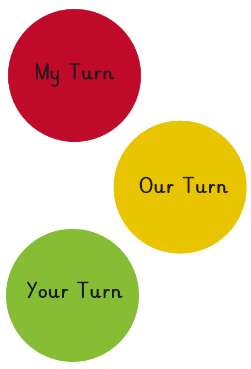How we teach English
At The Milford Academy, our English planning follows a consistent structure from EYFS to Y6. This planning sequence weaves together our teaching of age-related vocabulary, grammar, punctuation and reading objectives. The planning framework consists of three phases. At its heart is a clear focus on the purpose and audience of the writing that the children will publish at the end of the planning sequence. There is also a strong focus on key vocabulary from the text that the children will know by the end of the sequence. The ‘learning journey’ that the children are on is documented clearly on the English working walls in every classroom. The expectations of this are outlined in our ‘Learning Environment’ policy.
 As part of the first phase of the planning sequence (Reading as a Reader) children are immersed into the class text that they are studying. The focus of this phase is on the development of reading skills. Children are ‘hooked’ into the text with the use of exciting display or media. They then use evidence from the text cover to predict and wonder about the narrative of the text. During this phase, age-related reading objectives and VIPERS skills that the children need to develop are studied through close analysis of the text.
As part of the first phase of the planning sequence (Reading as a Reader) children are immersed into the class text that they are studying. The focus of this phase is on the development of reading skills. Children are ‘hooked’ into the text with the use of exciting display or media. They then use evidence from the text cover to predict and wonder about the narrative of the text. During this phase, age-related reading objectives and VIPERS skills that the children need to develop are studied through close analysis of the text.
 The second phase (Reading as a Writer) offers children the opportunity to summarise and order the key parts of their writing using the text to support this. The children will outline a concise ‘success criteria’ so that they are clear on what they must include. They will explore a ‘WAGOLL’/model piece of writing to find and replicate examples of the items on the ‘success criteria’. During this phase, there are focus lessons on 3 relevant VGP objectives (on the success criteria). By the end of this phase, the children will have a clear idea on the structure of the writing and what needs to be included.
The second phase (Reading as a Writer) offers children the opportunity to summarise and order the key parts of their writing using the text to support this. The children will outline a concise ‘success criteria’ so that they are clear on what they must include. They will explore a ‘WAGOLL’/model piece of writing to find and replicate examples of the items on the ‘success criteria’. During this phase, there are focus lessons on 3 relevant VGP objectives (on the success criteria). By the end of this phase, the children will have a clear idea on the structure of the writing and what needs to be included.
 The final phase (Writing as a Writer/Reader) allows children the time to draft their piece of writing supported by shared/guided/modelled writing with an adult. Children are then supported in the editing of their piece of writing. Once drafted and edited, the children are then ready to ‘publish’ their writing and share this with their intended audience.
The final phase (Writing as a Writer/Reader) allows children the time to draft their piece of writing supported by shared/guided/modelled writing with an adult. Children are then supported in the editing of their piece of writing. Once drafted and edited, the children are then ready to ‘publish’ their writing and share this with their intended audience.
In EYFS, the planning follows a similar pattern whereby children work on a story over a three-week sequence. They are hooked in by an exciting event (e.g. Goldilocks porridge footprints found around the classroom) and then they are immersed in the text by reading the story and joining in orally with key parts. They learn the story really well by acting it out with a focus on using the key vocabulary from the story; this helps the children to sequence the story. Elements of the continuous provision are linked with the story to embed it further. By the end of the sequence, the children are encouraged to do a piece of simple writing/mark making where appropriate.

English sessions largely follow the principles of the ‘Gradual Release of Responsibility’. The children are clear on what they are setting out to achieve by the end of the session. The teacher models this clearly during the ‘My Turn’ section of a session. Opportunities for children to practise what they have been shown using partially worked examples are planned for during the ‘Our Turn’ section before the children complete the work independently or with the support identified as necessary during the ‘Your Turn’ section of the session.
Each child’s progress is assessed regularly. Formative assessment is used to adapt sequences of learning within a session and from one session to the next. The pieces of writing that children publish across a half-term are used to inform our bespoke assessment grids used to identify those children who are working below, at or above Age-Related Expectations (ARE). The children also complete a weekly 'Writing Workshop' where they are given the opportunity to practise and imbed the skills of writing.
